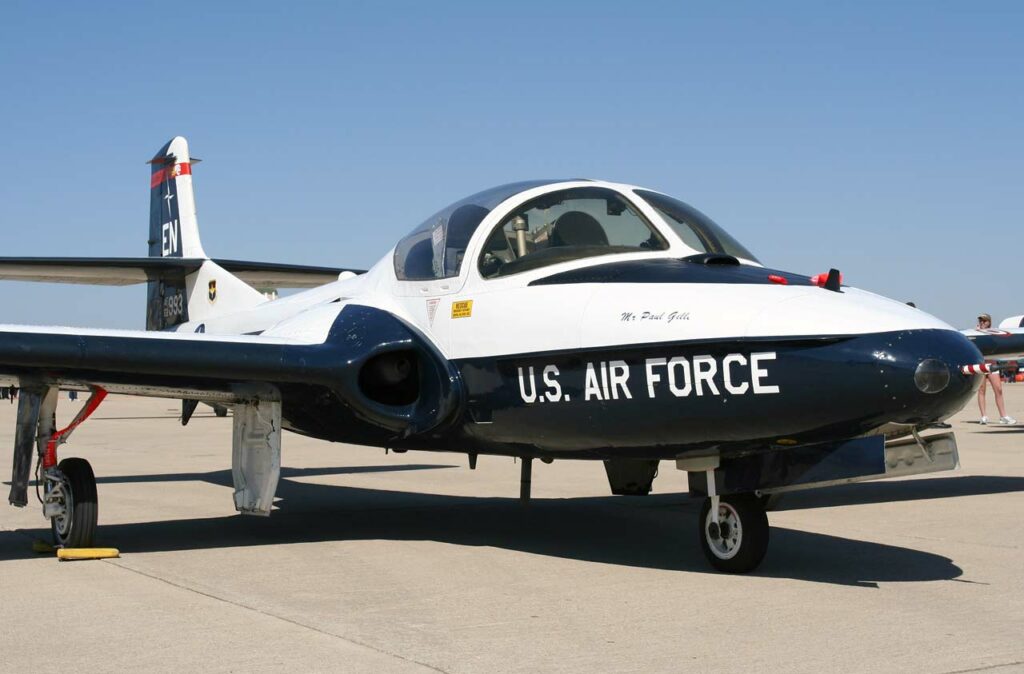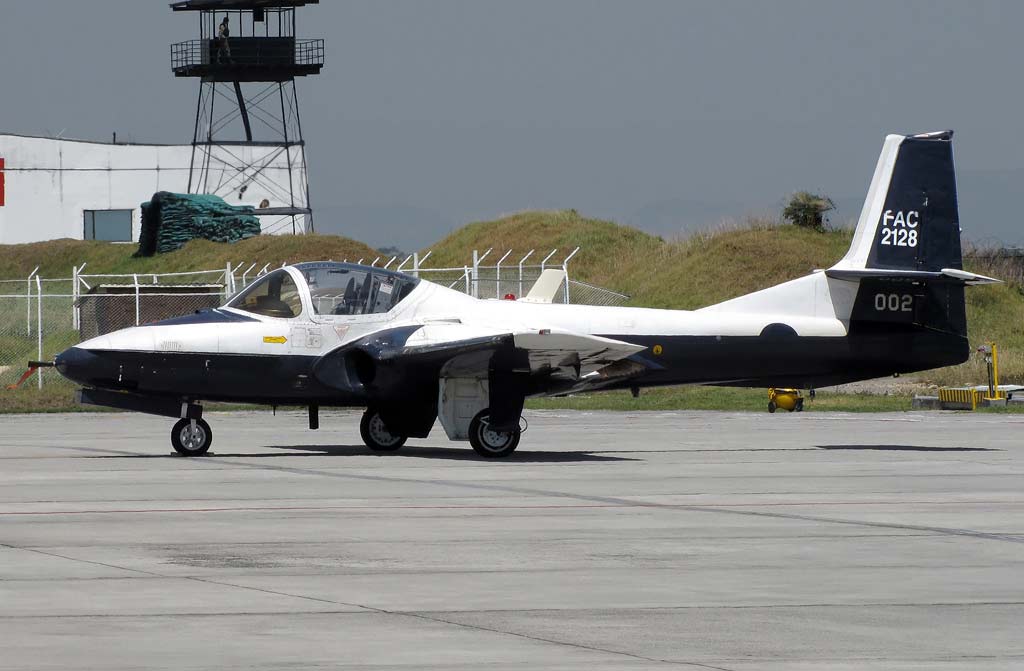The Cessna T-37 Tweet is a Twin-engine american jet trainer aircraft, known for its side-by-side seating and distinctive high-pitched noise.
Technical Summary
The Cessna T-37 Tweet is a small, twin-engine jet trainer aircraft developed by Cessna for the United States Air Force (USAF). With its first flight in 1954, the T-37 was designed to offer basic jet flight training to military pilots. Characterized by its straight-wing design, side-by-side seating for instructor and student, and powered by two Continental-Teledyne J69-T-25 turbojet engines, the T-37 Tweet was capable of reaching speeds up to 425 mph (684 km/h). Its ease of maintenance, reliability, and forgiving flight characteristics made it an ideal platform for transitioning pilots from propeller-driven aircraft to jets. Over its service life, the T-37 trained thousands of pilots worldwide, earning it the nickname “Tweet” due to the distinctive, high-pitched whine of its engines.
The Cessna T-37 Tweet holds a distinguished place in aviation history as one of the primary jet trainers used by the United States Air Force and various other air forces around the world. Since its inception in the 1950s, the T-37 has been instrumental in preparing pilots for the demands of flying high-performance jet aircraft.

History of the Development of the Cessna T-37 Tweet
In the early 1950s, the United States Air Force identified a need for a new jet-powered trainer to replace the aging fleet of propeller-driven trainers then in use. The goal was to find an aircraft that could better prepare pilots for the transition to jet fighters and bombers, which were becoming the mainstay of the Air Force’s inventory. Cessna, a company already well known for its light aircraft, responded to this requirement with the design that would become the T-37 Tweet.
The program was officially launched with an Air Force contract in 1952. Cessna’s design proposed a small, twin-engine jet that emphasized simplicity, ease of maintenance, and operational efficiency. The T-37’s first flight occurred on October 12, 1954, marking the beginning of what would become one of the most successful military training aircraft in history.
The T-37 did not have a specific NATO nickname, as it was primarily used by the U.S. Air Force and allied nations under direct military sales rather than through NATO channels.
Design of the Cessna T-37 Tweet
The design of the T-37 Tweet was groundbreaking for its time. The aircraft featured a straight-wing configuration, which provided stability and ease of control crucial for training purposes. It had a length of 29 feet 3 inches (8.92 meters) and a wingspan of 33 feet 9 inches (10.29 meters), making it compact and maneuverable. The side-by-side seating arrangement allowed for effective communication and instruction between the pilot and instructor, a key feature that distinguished the T-37 from other trainers with tandem seating.
Powered by two Continental-Teledyne J69-T-25 turbojet engines, each producing 1,025 pounds of thrust, the T-37 was capable of introducing student pilots to the characteristics of jet flight without the overwhelming power of front-line fighters. Its robust landing gear and forgiving flight characteristics made it ideal for the rigors of pilot training, including frequent takeoffs and landings.
However, the T-37’s modest performance compared to operational jet fighters meant it was not suitable for advanced combat training. Its limited speed and altitude capabilities were seen as drawbacks for training pilots for high-performance aircraft, leading to the development of more advanced trainers like the T-38 Talon for supersonic training.
Performance of the Cessna T-37 Tweet
The T-37 Tweet offered performance characteristics well-suited to basic jet training. It had a maximum speed of 425 mph (684 km/h) and a service ceiling of 35,000 feet (10,668 meters). The aircraft’s range was approximately 935 miles (1,504 kilometers), enabling it to conduct extended training missions without the need for refueling.
When compared to other training aircraft of its era, such as the British BAC Jet Provost or the Italian Aermacchi MB-326, the T-37 was competitive, providing a balance of reliability, ease of maintenance, and performance that met the USAF’s training needs. Its twin-engine configuration also added a layer of safety for training missions, allowing the aircraft to return to base even if one engine failed.
Variants of the Cessna T-37 Tweet
Several variants of the T-37 were developed over its service life, including the T-37A initial production model, the T-37B with improved avionics and the ability to carry weapons for light attack or counter-insurgency roles, and the T-37C, which featured hardpoints for weapons and was exported to various countries for military training and light attack roles. The A-37 Dragonfly, a development of the T-37 designed for combat roles, featured more powerful engines and was used extensively during the Vietnam War.

Military Use and Combat of the Cessna T-37 Tweet
While primarily a training aircraft, the T-37 saw limited use in combat roles, particularly in its A-37 Dragonfly variant. The T-37 itself was utilized for basic flight training, instrument training, and introduction to jet aircraft operations across several countries. Its role was crucial in preparing pilots for transition to more advanced aircraft, including fighters, bombers, and transport planes.
The T-37’s widespread adoption by air forces worldwide underlined its effectiveness as a training platform. Countries such as Turkey, Portugal, and South Korea used the T-37 for decades, benefiting from its reliability and ease of operation. However, as newer, more capable training aircraft entered service, the T-37 was gradually phased out. Its last significant use in the U.S. Air Force concluded in the early 21st century, replaced by more modern trainers like the T-6 Texan II.
The Cessna T-37 Tweet represents a significant chapter in military aviation history, embodying the transition to jet-powered flight training. Its development and widespread use underscored the importance of specialized training aircraft in preparing pilots for the complexities of modern air combat. Despite its eventual replacement by more advanced trainers, the T-37 Tweet’s legacy as a reliable, effective training platform remains a testament to its design and operational success.
Back to the Trainers section.